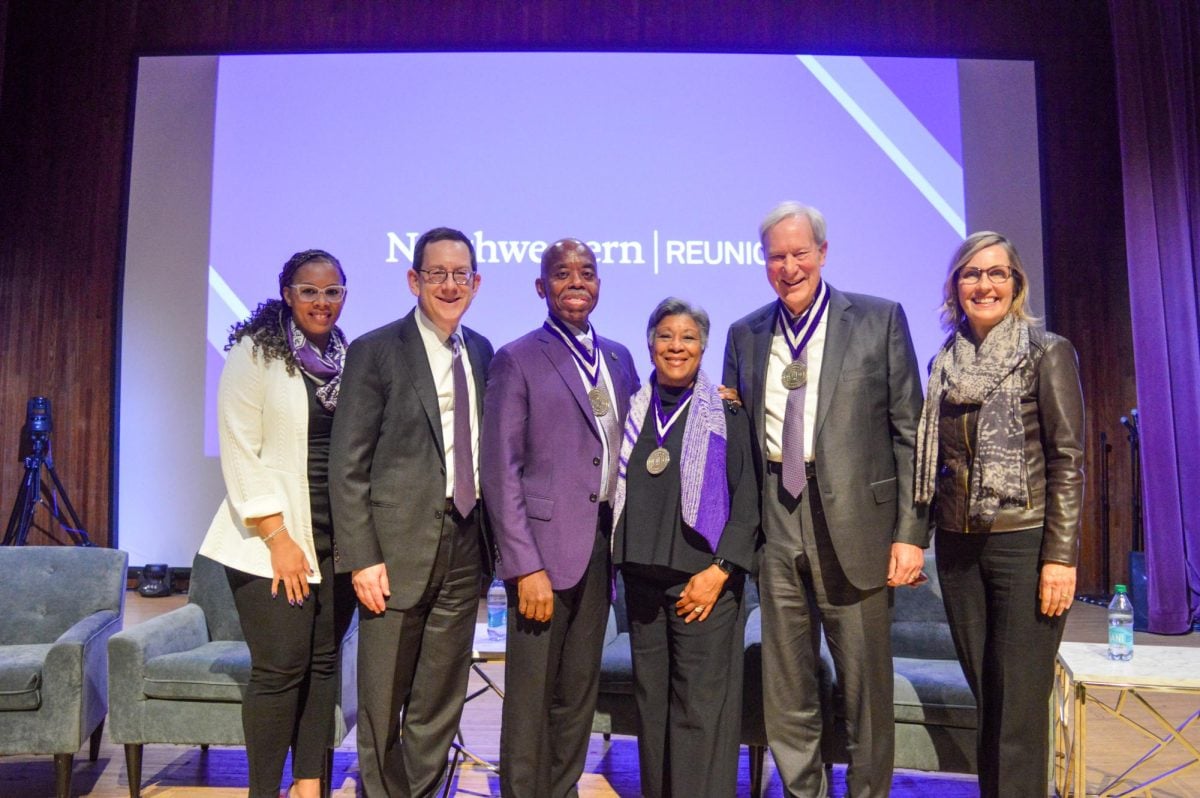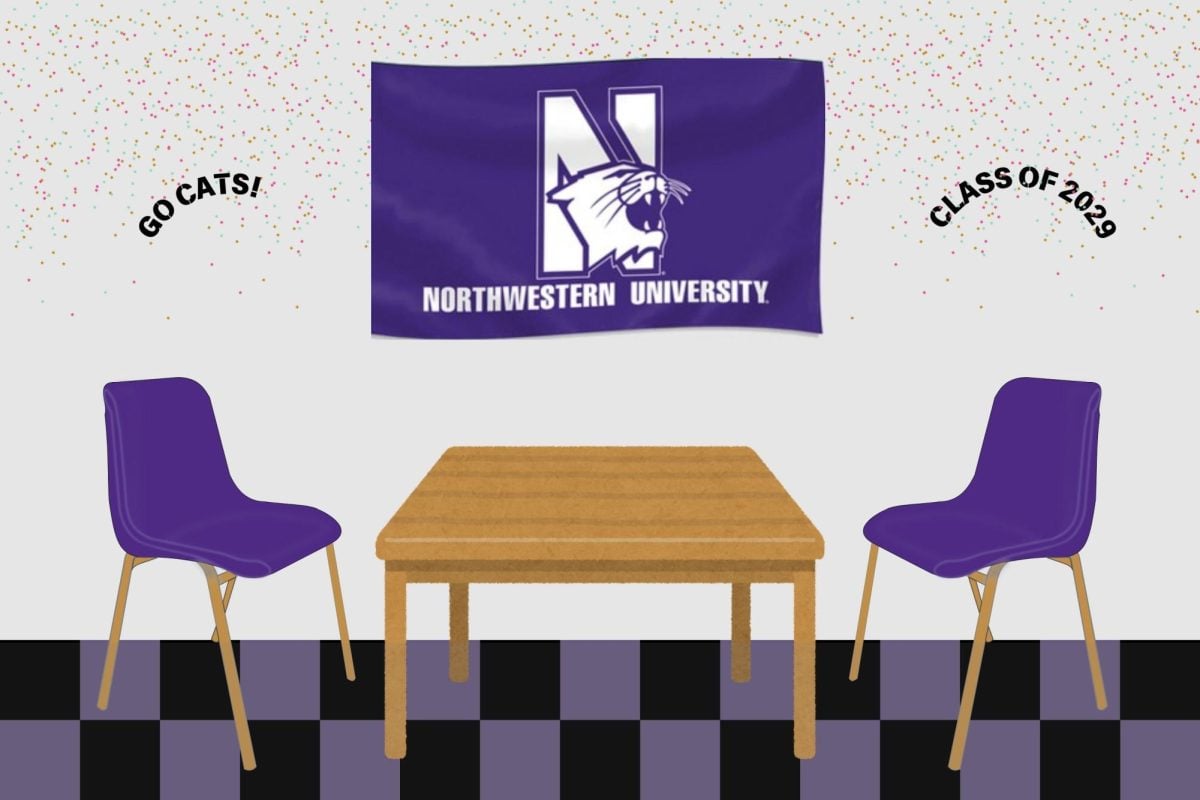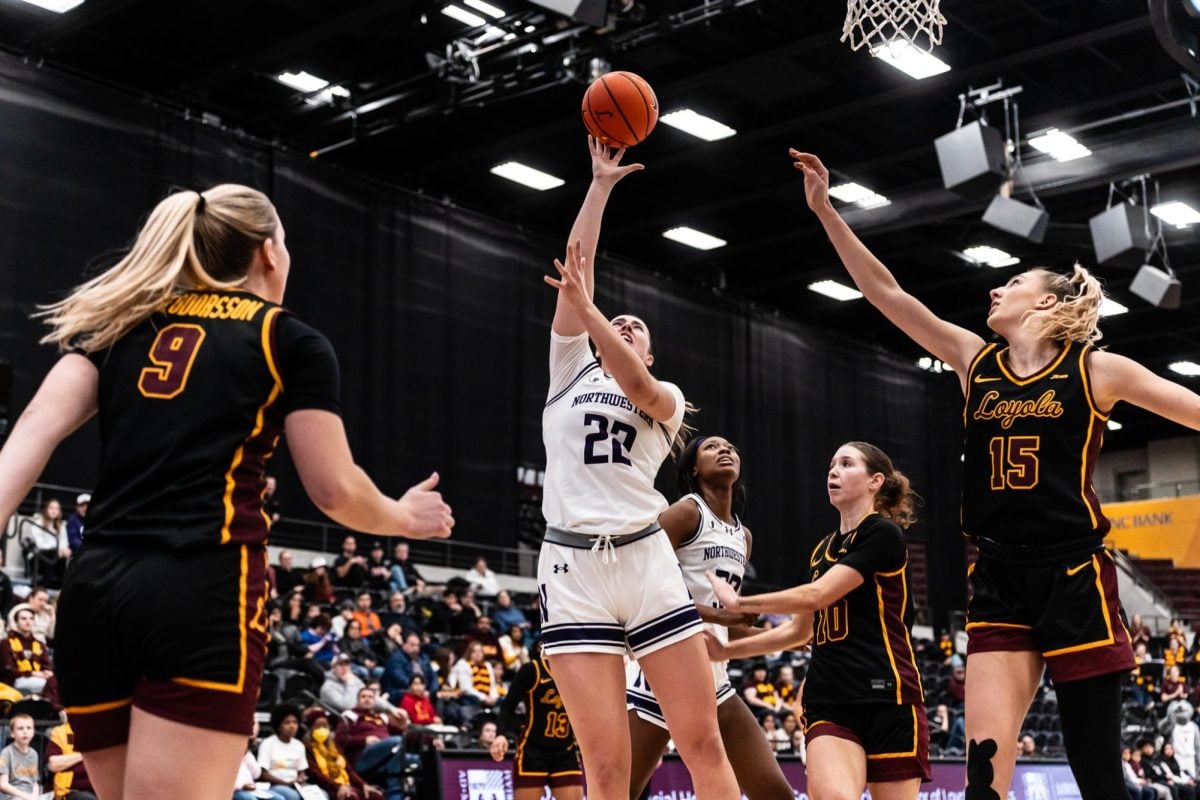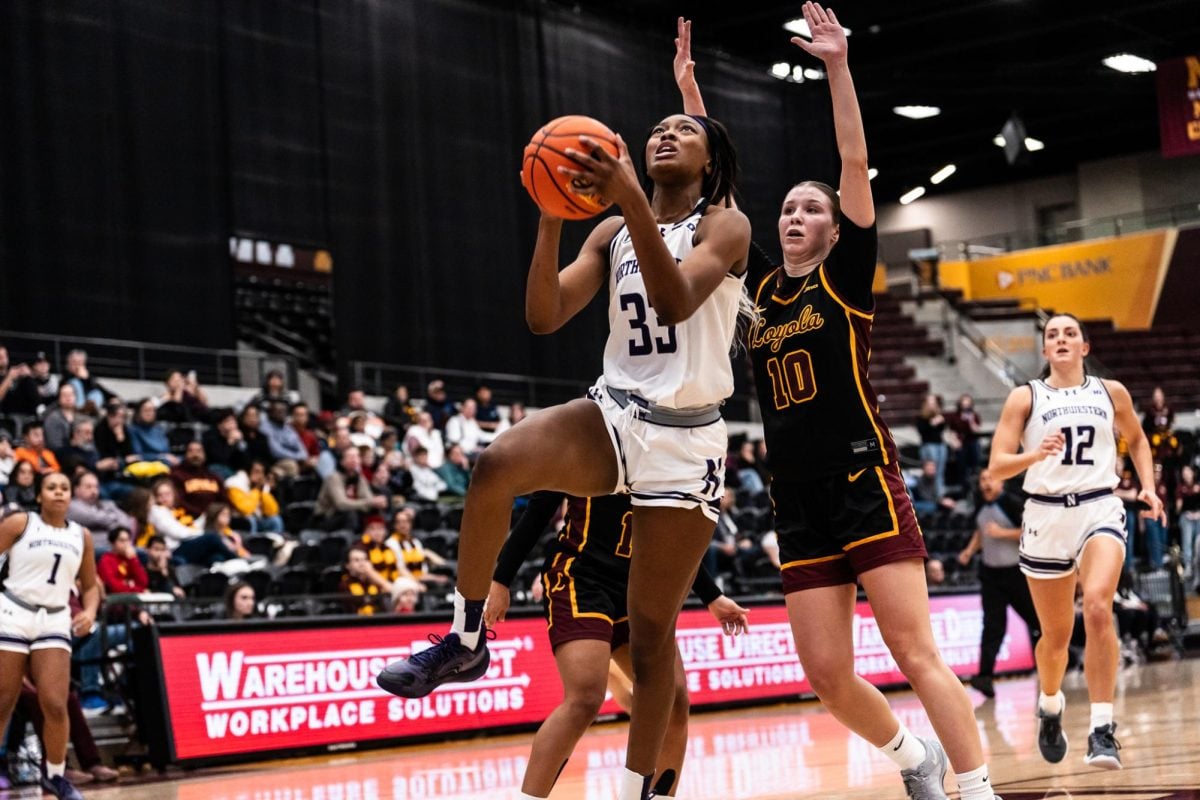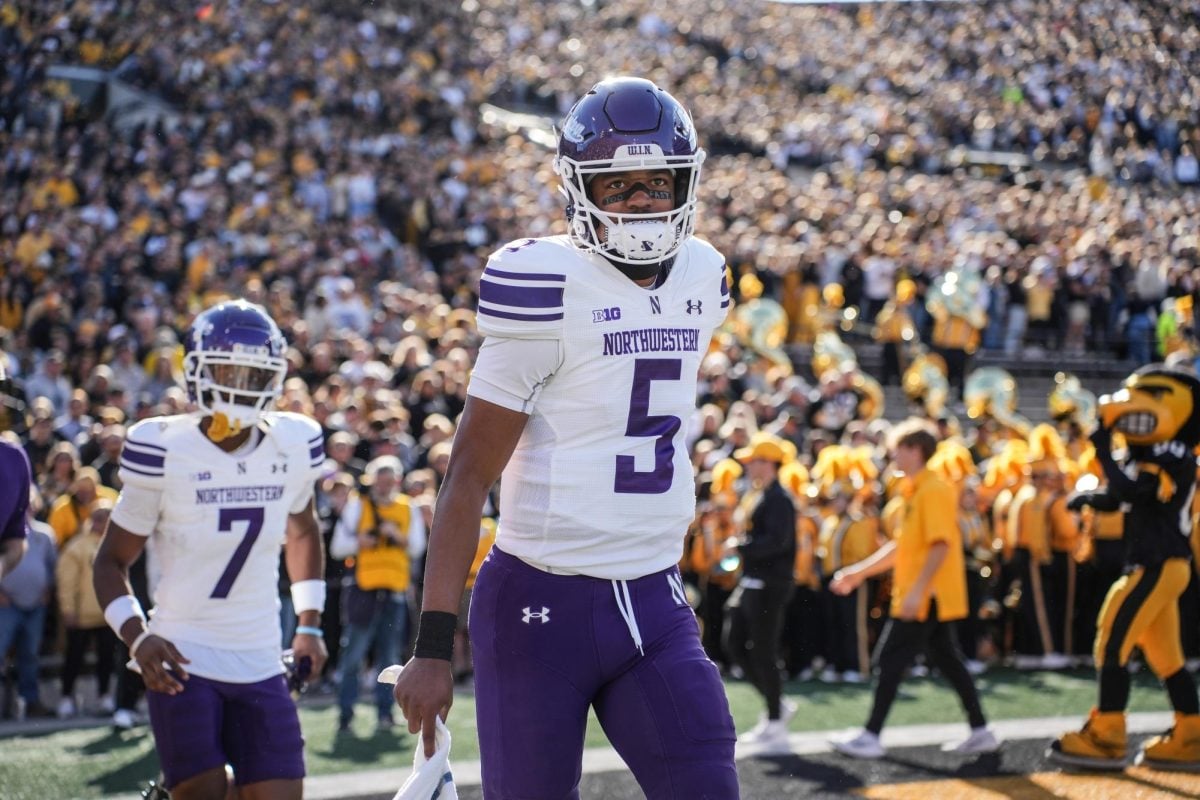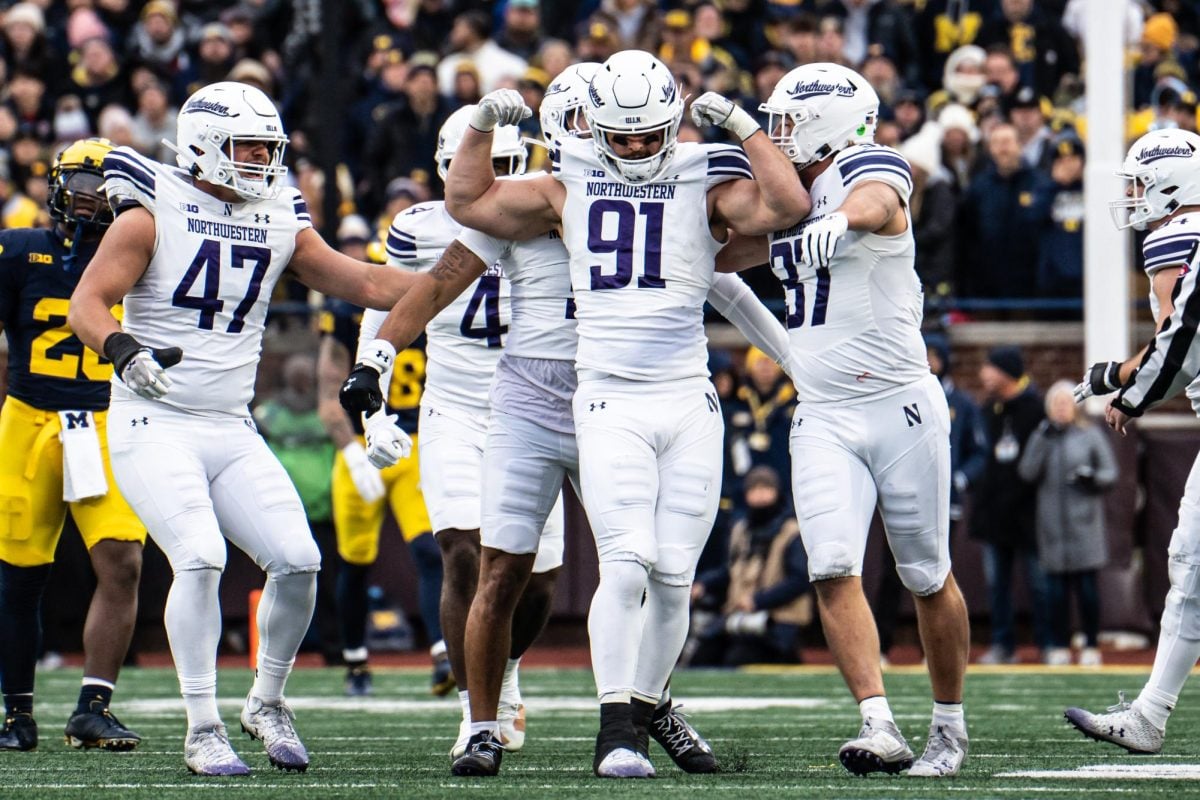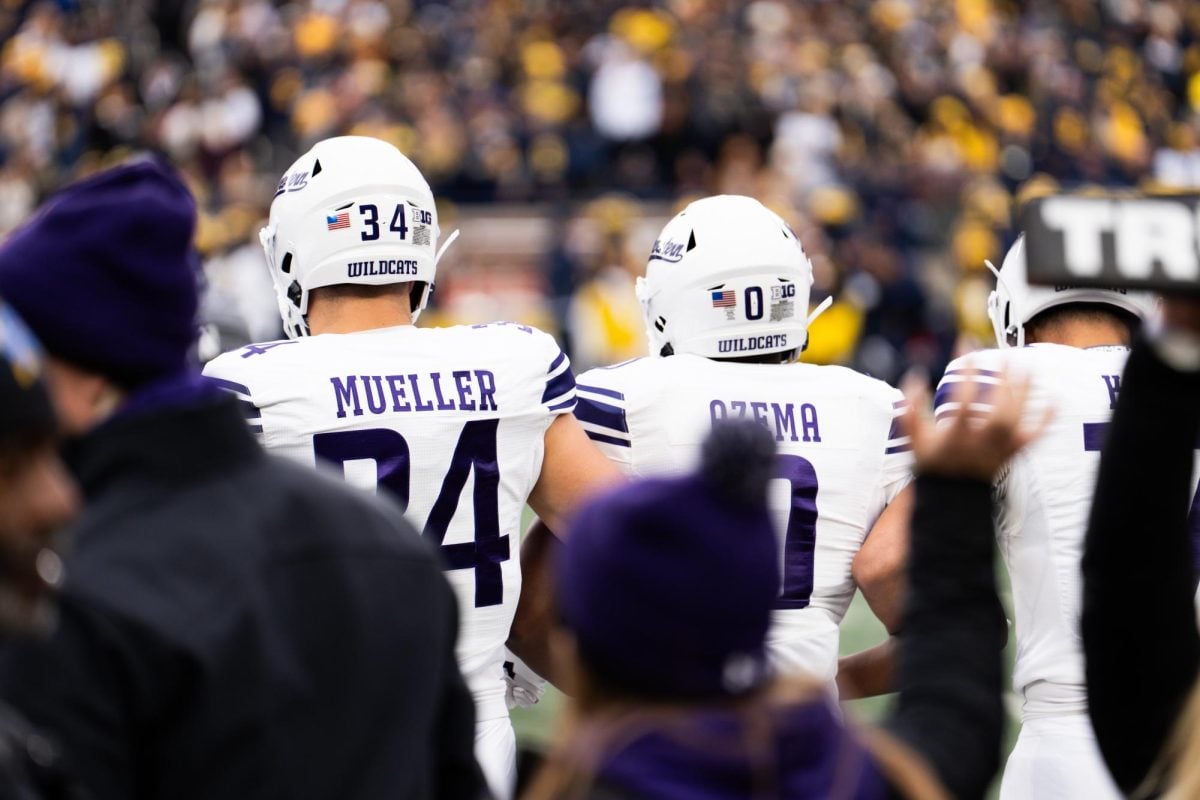Women comprise roughly 10 percent of the sports journalism work force. Northwestern alumna Christine Brennan, Medill ’80, has reached what many believe is the pinnacle of the profession, with a weekly column in USA Today. Brennan has twice been named one of the nation’s top 10 sports columnists by the Associated Press. She is also a commentator for ABC, ESPN and NPR. But what really sets Brennan apart is she has a passionate personality.
Brennan has always been first pick. In middle school, all the neighborhood boys wanted the 6-foot-tall girl to play on their team. After college, she became the first female sports writer at The Miami Herald, covering the Miami Hurricanes during their first national championship in 1984. Now, after 28 years of sports journalism, the sports world still turns to Brennan for sports commentary. As one of the pioneers in sports media, Brennan has helped pave the way for women in a male-dominated field.
But Brennan is just one example of the talented women with connections to NU who have thrived in the world of sports journalism. Though the realms of organized athletics and sports journalism are still widely dominated by men, these women have helped make strides toward equality.
In the early 1970s, The Associated Press estimated only 25 women worked in U.S. newspaper sports departments, and just five worked in sports broadcasting. Now, roughly 10 percent of the sports media industry is comprised of women. Though this increase is promising, Marie Hardin, associate director for research of the John Curley Center for Sports Journalism at Penn State, said she believes women still have “token status” in the workplace.
“I don’t know that women have really broken through yet,” Hardin said. “Collectively, we still have a long way to go.”
Paving the Way
For a portion of her life, Brennan was not called by her name.Instead, she was called “The Skirt.”
Her co-worker Gary Long often teased her about wearing a skirt, but Brennan would brush his comments off.
“I never took it personally, maybe I should have,” she said. “Absolutely nothing was going to get in my way.”
When Brennan was in eighth grade (1972), President Richard Nixon enacted Title IX, which mandated gender equality in every program receiving federal funding.
But even before Title IX passed, Brennan had her own outlet.
“Sports was a magical escape for me with my dad,” she said.
Brennan adopted her love of sports at an early age from her encouraging father, Jim. Brennan took full advantage of playing opportunities when they were given to her. Though there were no sports teams available before her freshman year of high school, Brennan became a six-sport athlete and senior athlete of the year at Ottawa Hills (Toledo, Ohio) High School.
During her time at Northwestern, Brennan covered politics forThe Daily, only writing for the sports section when she covered softball for roughly a month during her sophomore year.
“I was never in the Northwestern football press box,” Brennan said. “But I just loved spending all the time in The Daily office.”
Brennan majored in journalism at Northwestern and became the managing editor of The DAILY during her senior year.
After completing her bachelor’s (1980) and master’s (1981) degrees at NU, she started her first job at the age of 23. Brennan said her path in journalism has been the “world’s greatest adventure.”
Even as a weekly columnist for USA Today, Brennan said she strives to uphold the values of hard work she learned in the late 1970s at Medill.
“I hope that my best column that I’ve ever written is this week’s,” she said. “And then next week, I hope it’s the best.”
Though Brennan’s story is not an unusual one for women in sports journalism, not every woman in the field got their start this way. Vicki Michaelis, currently the lead Olympics writer for USA Today, also began her career at Medill, but with the intentions of becoming a business reporter.
Michaelis found her calling in sports at the Palm Beach Post, writing first about high school sports, then about the Miami Hurricanes and the Miami Heat. She moved back to her hometown to write for the Denver Post before settling in at USA Today.
During her time at the Palm Beach Post, Michaelis found the drama of basketball games always topped city council meetings.
“(Sports) really are a reflection of some big-picture life things,” Michaelis said. “I realized people who devoted their lives to athletics were the kind of people I liked to be around and write about. They’re committed, they’re dedicated, they’re passionate and they make great stories.”
That same exhilaration drew Helene Elliott to sports writing. Elliott was the first female journalist inducted into the hall of fame of a major professional sport. She was honored with the Elmer Ferguson Memorial Award from the Hockey Hall of Fame for her coverage of the NHL.
“I’ve always enjoyed looking at what makes people have the performance or game of their lives at a time when their team needs it most,” Elliott said.
Full Circle
Elliott was the sports editor of The DAILY when Brennan was a freshman. Though she wasn’t the first female sports editor, Elliott made an impression on Brennan.
“I never saw a woman’s byline in the sports section until I got to Northwestern,” Brennan said.
Elliott was able to land her first job at the Chicago Sun-Times by sending letters to all of the sports editors in the Chicago area. She worked for Newsday for 10 years before heading west, where she now works as a columnist for the Los Angeles Times.
Because Elliott was Brennan’s mentor in college, the two know firsthand the importance of having female role models in sports journalism. Both carved out their own trails, and along the way helped women become more accepted in the profession.
“I would hope that women today would realize that it wasn’t always so easy to just walk into a press box and be accepted,” Elliott said. “We and our editors fought battles so that female sports writers and TV commentators can be where they are.”
Foot in the Door
Marcy Rothman, University President Morton O. Schapiro’s mother-in-law, worked as a “copy girl” for the New York Post in the early 1940s. Because many of the male copy editors for the sports department were drafted to World War II, the editor was looking for a knowledgeable replacement.
One day Rothman ran into the sports editor, who asked her, “How many baseball leagues are there?”
Rothman was the only one to answer the question correctly. In her new position, Rothman wrote game scores on a chalkboard when newspaper type was still set by hand. Rothman said her editor was “half a bastard, half an angel” because he would let her come in late when she had exams, but also had a terrible temper. After eight months as a copy editor, Rothman became a cub reporter in the sports department.
Over the last 60 years, Rothman, now 84, has watched women gain prominence in sports media.
“It’s gone from nothing to something very important and distinguished,” she said. “It just warms my heart to turn on the television at night to see women commentating, and I would say that women are given greater respect because they earned it.”
Opening Doors
Amy Rosewater, Medill ’93, said she is thankful Rothman, Elliott and Brennan opened doors for her. Rosewater met Brennan at a conference before her senior year at NU. She said Brennan took her under her wing. To this day, Rosewater looks to Brennan for guidance.
“I realized when I met her that this wasn’t such a weird thing,” Rosewater said. “There were lots of women getting involved in (sports).”
Rosewater first tasted sports writing at The DAILY when she was asked to write a “puffy piece” on the rugby team. When Rosewater started calling for interviews, she uncovered a scandal involving the team drinking alcohol on a bus. At the end of t
he quarter, the sports editor asked Rosewater to join the desk.
Rosewater worked part-time at the Chicago Sun-Times during her senior year before working as an intern at the Cleveland Plain Dealer. On the last day of Rosewater’s internship, the beat writer for the Cleveland Browns announced his retirement, opening a position for Rosewater. She wrote for the Plain Dealer for eight years before working as an editor and writer for the United States Olympic Committee.
Though Rosewater faced discrimination, she said women like Brennan and Elliott made athletes and coaches more accustomed to female reporters. Rosewater compared her experience as a reporer to that of a substitute teacher: She could either lay down the law within the first few minutes of class or let her class run rampant.
“Over the years you just have to develop a thick skin,” she said. “You have to keep in mind that some of these people who you’re covering are not going to treat you the way you would expect. You just have to develop a confidence in yourself that you can do the job and not be rattled.”
People Business
While thick skin is necessary, Brennan said sports journalism is a “people business.” Good relations with co-workers, peers and sources are necessary, especially for females. Brennan said women have to work twice as hard to get on the good side of those around them.
“It’s all about how you treat people,” Brennan said. “It’s about thank you notes, yes ma’am and no sir. It’s old school.”
Though she was never the victim of blatant sexism, Michaelis said she had to work harder than her male counterparts to get the same amount of respect. She noticed differences in the way she was treated. For example, coaches oversimplified sports terminology and statistics when she interviewed them.
The same hard work paid off for Brennan. She was the first to break the story of the 2002 Winter Olympics pairs figure skating scandal. French judge Marie Reine Le Gougne was forced to incorrectly over-score the Russian pair over the Canadians, who were favored. Brennan worked with a member of the International Skating Union for nearly a decade on her skating book “Inside Edge.” At 2 a.m., after the medal ceremony, that source called Brennan, allowing her to reveal one of the biggest sports stories of her career.
The Future
Will this disparity ever go away? According to Brennan, Michaelis, Elliott and Rosewater, the answer is yes.
Although equal treatment of women in sports is not evolving as rapidly as the rest of the journalism world, change is happening.
While Brennan’s generation may have experienced differential or negative treatment, Rosewater said sexism is no longer an issue.
Still, future generations need to remove the label of “female” from sports reporter, the torch bearers said. To do so, Michaelis calls for over-preparation.
“Even now, after all these generations of women, people are going to look at you and look at the man standing next to you and think he knows more than you do,” she said. “You have to know your stuff cold because any crack they find is going to be attributed to being a woman.”
When Elliott started writing, she said there was an immediate assumption she was the sports desks lone female. Hard work and professional behavior helped Elliott overcome her coworker’s misperceptions.
“(I just didn’t) give them any ammunition to use (against me),” Elliott said. “Once you prove that you’re there to work hard and you’re ethical and conscientious, that vanishes.”
Just ask Brennan. Prior to Saturday’s Homecoming football game against Indiana, Brennan commanded the respect and attention of everyone around her. But really, nothing had changed. Former DAILY editor-in-chief Rick Wamre said Brennan was the same way more than 30 years ago.
After more than three decades of spearheading change for women in the world of sports, Brennan is still making waves.[email protected]
Editor’s Note: Christine Brennan’s graduation years for her bacherlor’s and master’s degrees were changed from ’79 and ’80 to ’80 and ’81.

